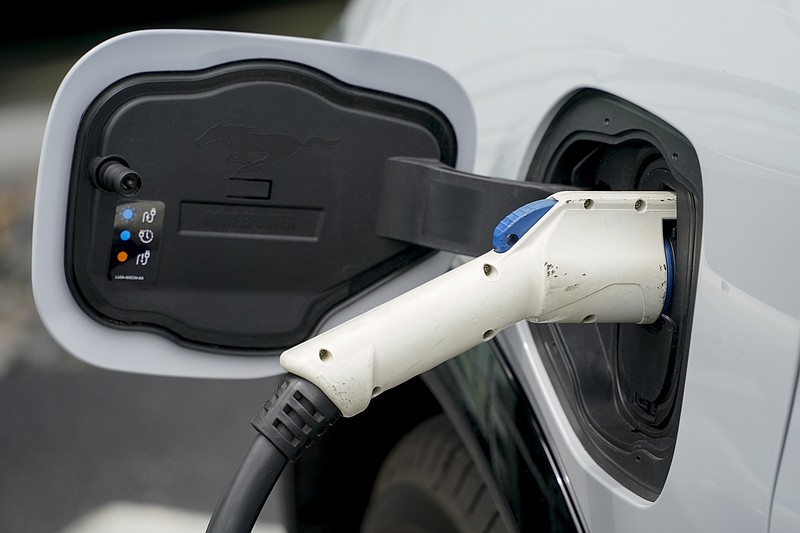We suspect most Tennessee Valley residents already suspect the flimflam aspects of the so-called "Inflation Reduction Act," which recently passed the Democrat-controlled U.S. Senate.
Based on hoped-for figures and budget gimmickry, the bill - according to a supportive, Democrat-heavy coalition called the Committee for a Responsible Federal Budget - has aspirations to be a net-positive for taxpayers by 2027.
In the meantime, Americans are struggling with the highest inflation in more than 40 years, the highest gasoline prices in the history (now down slightly) and no end in sight.
The year 2027 seems a long way away, especially when your savings are being depleted weekly to keep up with the continuing rise in prices.
The Knoxville-based Southern Alliance for Clean Energy, for its part, weighed in Monday on how it believes the bill will help meet its desire for "responsible and equitable energy choice to ensure clean, safe, and healthy communities throughout the Southeast."
It listed five ways it believes passage of the bill will help.
1. "Give opportunities to hundreds of thousands of Americans to work in well-paying jobs manufacturing, installing and maintaining clean energy, energy efficiency and clean transportation."
For there to be "well-paying jobs" for "hundreds of thousands of Americans," a market for "clean energy, energy efficiency and clean transportation" must be available. To date, most energy companies in the Southeast use of a mix of fossil-fuel and cleaner options to deliver energy to their customers. Unless it makes sense to alter their balance of energy over the medium-term future - and for most, at this point it doesn't - they're not going to significantly change how they get their energy.
Similarly, until it makes sense for residents in the Southeast to use clean transportation, such as purchasing electric cars, they won't do it. The average price of a new electric vehicle hit $66,000 in June, according to Kelley Blue Book. That's a 3.8% increase since May and a 13.7% increase from 2021. It's also almost $18,000 more than the average price of a gasoline-powered car. Though a savings on electric energy vs. gasoline to power the car might be realized in the long run, paying the additional price up front is a stretch for most people.
2. "Lower Americans' cost of electricity by spurring the development of hundreds of gigawatts of low-cost clean energy, including wind, solar, and battery energy storage."
The reality of lowering Americans' cost of electricity is a panacea. Tennessee Valley Authority, which serves the majority of customers in the Tennessee Valley, lowers and raises energy costs annually, but the reality is the overall energy cost to customers is never significantly less.
Further, additional investments in wind, solar and battery energy storage would need to be made by energy companies even to test the theory of lowering costs, and the cost of those investments would be passed on to customers in the form of higher rates.
3. "Protect drivers from expensive and volatile fuel costs through financial incentives to switch to electric vehicles."
The "volatile fuel costs" Americans have seen in the last year-plus are a direct result of policies by the Biden presidential administration. Many things can have temporary effects on fuel costs, and do every year, but the decision to move the country from a net energy exporter in 2019 - for the first time since 1952 - toward being a net energy importer has had a significant effect on energy prices.
For electric vehicles to hold their own, just as with green energy, they must not be affordable only through financial incentives. When they are, and when the technology to fuel them across the country catches up, only then will Americans begin to buy them in larger numbers.
4. "Reduce households' bills through historic investments in rebates and tax credits for home energy efficiency and efficient electric appliances."
See above. Only when rebates and tax credits are not needed for home energy efficiency and efficient electric appliances will the desire for them climb. Plus, as long as efficiencies are subsidized, manufacturers have no incentive to improve their products. When home energy products and electric appliances are forced to stand on their own, manufacturers will have every reason to improve efficiencies.
5. "Promote environmental justice and direct resources and benefits to disadvantaged communities, which are often overlooked for investment and bear heavy costs of fossil fuel pollution."
Rather than "environmental justice" to "disadvantaged communities," the bill would mean environmental punishment to the disadvantaged. Instead of benefits, higher energy costs passed on to consumers through forced greener technology, more regulations and electric cars will have the opposite effect, and the poor will be the hardest hit through the policies in the bill.
We don't blame the Southern Alliance for Clean Energy for promoting the bill because it fits with the organization's world view, but we believe most consumers can see through the rhetoric.
